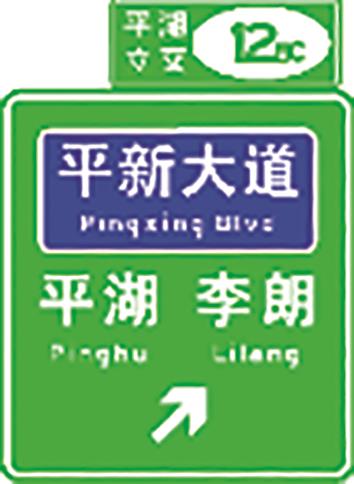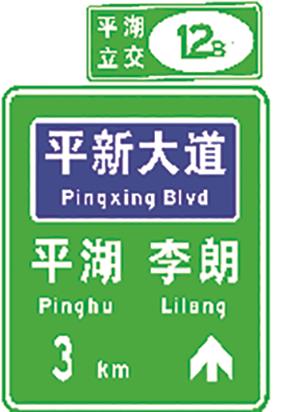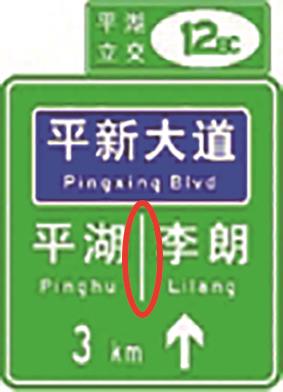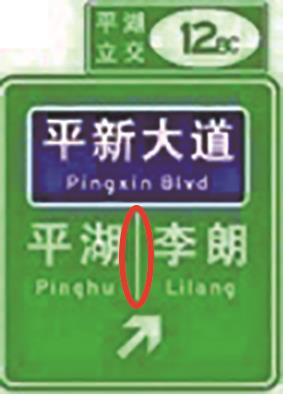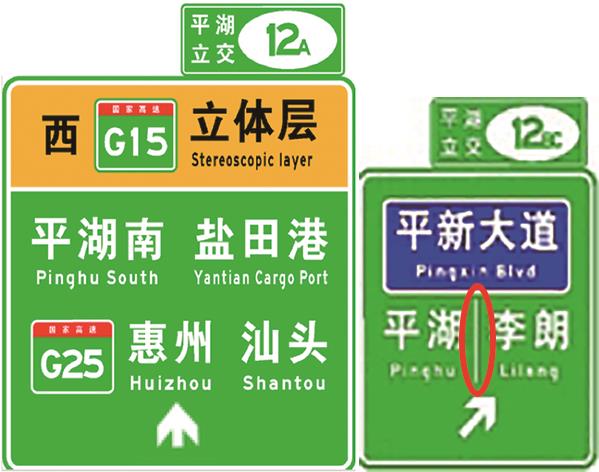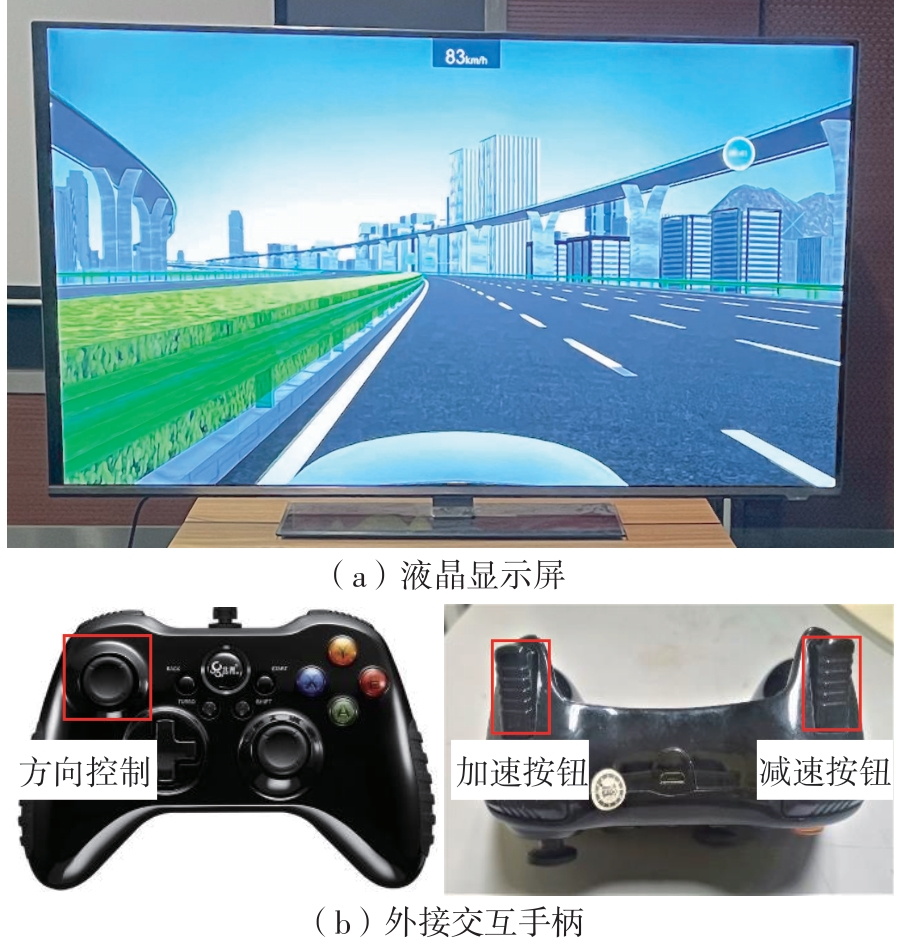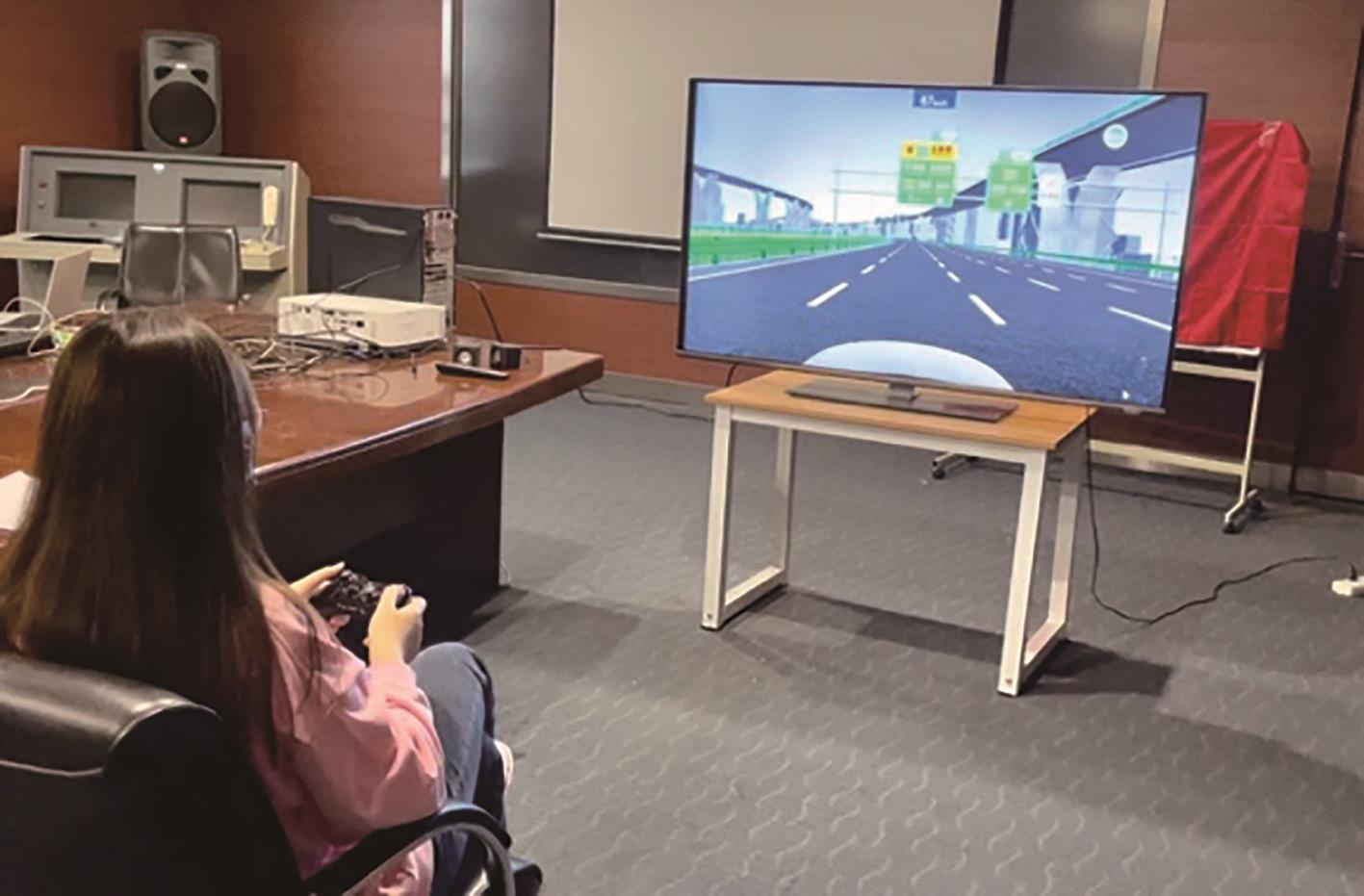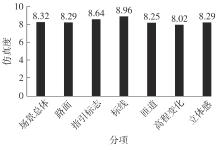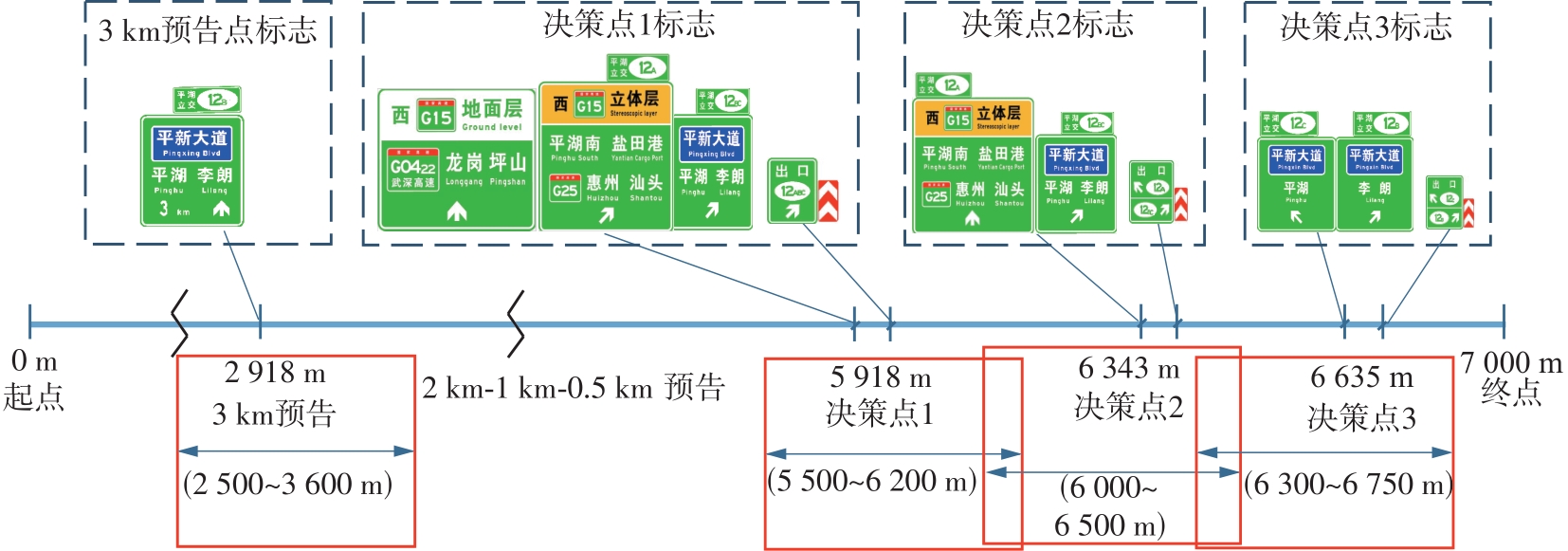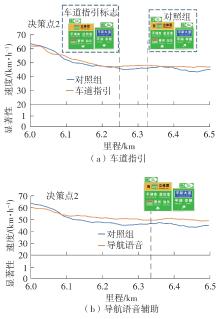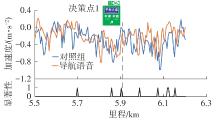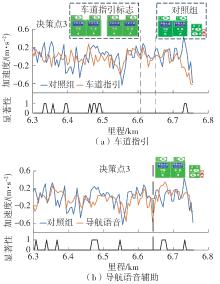Journal of South China University of Technology(Natural Science Edition) ›› 2024, Vol. 52 ›› Issue (5): 20-30.doi: 10.12141/j.issn.1000-565X.230263
• Traffic & Transportation Engineering • Previous Articles Next Articles
Optimization Design of the Stereoscopic Compound Expressway Sign System Based on Unity3D
GAO Longkai1( ), ZHAO Xiaohua1, OU Jushang2, LI Yang3, LIU Xiangmin1, LIU Qiqi1
), ZHAO Xiaohua1, OU Jushang2, LI Yang3, LIU Xiangmin1, LIU Qiqi1
- 1.Faculty of Architecture,Civil and Transportation Engineering,Beijing University of Technology,Beijing 100124,China
2.Key Laboratory of Intelligent Policing,Sichuan Police College,Luzhou 646000,Sichuan,China
3.Department of Road Traffic Management,Beijing Police College,Beijing 102202,China
-
Received:2023-04-23Online:2024-05-25Published:2023-12-27 -
About author:高龙凯(1996-),男,博士,主要从事交通安全研究。 -
Supported by:the National Natural Science Foundation of China(52072012)
CLC Number:
Cite this article
GAO Longkai, ZHAO Xiaohua, OU Jushang, et al. Optimization Design of the Stereoscopic Compound Expressway Sign System Based on Unity3D[J]. Journal of South China University of Technology(Natural Science Edition), 2024, 52(5): 20-30.
share this article
| 1 | 交通运输部 .2021年交通运输行业发展统计公报[EB/OL].(2022-05-25)[2023-02-27].. |
| 2 | HAUER E .Statistical road safety modeling[J].Transportation Research Record:Journal of the Transportation Research Board,2004,1897:81-87. |
| 3 | LIVNEH M, POLUS A, FACTOR J .Vehicle behavior on deceleration lanes[J].Journal of Transportation Engineering,1988,114(6):706-717. |
| 4 | 李娜 .陕西省高速公路路径指引标志设置技术研究[D].西安:长安大学,2016. |
| 5 | 陈志乾 .基于换道距离的双向八车道高速公路出口指路标志设置研究[D].西安:长安大学,2017. |
| 6 | 陈俊,邵海鹏 .驾驶人对交通标志视认的短时记忆衰减模型研究[J].公路,2011(7):159-167. |
| CHEN Jun, SHAO Hai-peng .A study on the short-term memory attenuation model of drivers’ recognition of traffic signs[J].Highway,2011(7):159-167. | |
| 7 | U.S. Department of Transportation Federal Highway Administration .Manual on Uniform Traffic Control Devices for Streets and Highways[M].FHWA:U. S.Department of Transportation Federal Highway Administration,2009. |
| 8 | 赵妮娜,赵晓华,林展州,等 .考虑间接到达高速公路信息指引需求的出口预告标志设计[J].北京工业大学学报,2018,44(8):1129-1135. |
| ZHAO Nina, ZHAO Xiaohua, LIN Zhanzhou,et al .Advance guide sign design considering the guidance demand of indirect reached freeway information[J].Journal of Beijing University of Technology,2018,44(8):1129-1135. | |
| 9 | 杨景瑞 .高速公路枢纽互通式立交出口指路标志设置研究[D].西安:长安大学,2018. |
| 10 | 王振国 .绕城高速公路出入口指路标志信息量及版面设置研究[D].西安:长安大学,2018. |
| 11 | GONZALEZ-ORTEGA,D, DIZA-PERNAS F J, MARTINEZ-ZARZUELA M,et al .Unity-based simulation scenarios to study driving performance[C]∥Proceedings of 8th International Conference on Simulation and Modeling Methodologies,Technologies and Applications (SIMULTECH 2018).Setúbal:SCITEPRESS-Science and Technology Publications,Lda,2018:183-189. |
| 12 | KUZMIC J, RUDOLPH G .Unity 3D simulator of autonomous motorway traffic applied to emergency corridor building[C]∥Proceedings of the 5th International Conference on Internet of Things,Big Data and Security (IoTBDS 2020).Setúbal:SCITEPRESS-Science and Technology Publications,Lda,2020:197-204. |
| 13 | LI J H, ZHAO X H, XU S L,et al .The study of driving simulator validation for physiological signal measures[J].Procedia-Social and Behavioral Sciences,2013,96:2572-2583. |
| 14 | HUANG L H, ZHAO X H, LI Y,et al .Driving simulator-based study to quantify typical diagrammatic guide sign efficiency along urban expressway interchanges[J].Journal of Transportation Safety & Security,2020,12(7):839-862. |
| 15 | ZHAO X H, JU Y J, ZHANG C F,et al .Examining the effectiveness of tunnel traffic control devices:a driving simulator study[J].Advances in Transportation Studies,2021,53:51-68. |
| 16 | LERMAN J .Study design in clinical research:sample size estimation and power analysis[J].Canadian Journal of Anaesthesia,1996,43(2):184-191. |
| 17 | CHOW S C, SHAO J, WANG H,et al .Sample size calculations in clinical research[M].Calabasas:CRC Press,2017. |
| 18 | DING H, ZHAO X H, RONG J,et al .Experimental research on the effectiveness and adaptability of speed reduction markings in downhill sections on urban roads:a driving simulation study[J].Accident Analysis & Prevention,2015,75:119-127. |
| 19 | DING H, ZHAO X H, RONG J,et al .Experimental research on the effectiveness of speed reduction markings based on driving simulation:a case study[J].Accident Analysis & Prevention,2013,60:211-218. |
| 20 | HUANG L H, BIAN Y, ZHAO X H,et al .Quantitatively exploring the relationship between eye movement and driving behavior under the effect of different complex diagrammatic guide signs[J].Cognition,Technology & Work,2020,22(2):373-388. |
| 21 | AARTS L, van SCHAGEN I .Driving sped and the risk of road crashes:a review[J].Accident Analysis & Prevention,2006,38(2):215-224. |
| 22 | 高岩,罗毅,尤志栋,等 .手机操作类型对驾驶人跟车行为的影响[J].中国公路学报,2018,31(4):1-9,58. |
| GAO Yan, LUO Yi, YOU Zhi-dong,et al .Influence of operating types of smartphone on drivers’car- following behavior[J].China Journal of Highway and Transport,2018,31(4):1-9,58. | |
| 23 | MITSCHKE M .汽车动力学[M].北京:人民交通出版社,1997. |
| [1] |
CHEN Bingshuo, LI Yang, ZHAO Xiaohua, et al.
Evaluation and Influencing Factors of Cognitive Driving Ability in Elderly Drivers[J]. Journal of South China University of Technology(Natural Science Edition), 2024, 52(9): 141-152. |
| [2] | HE Qingling, PEI Yulong, DONG Chuntong, et al. ASO-LSSVM Risk Driving Behavior Classification and Identification Incorporating Cauchy one Dimensional Oppositional Learning and Adaptive Variable Spiral [J]. Journal of South China University of Technology(Natural Science Edition), 2024, 52(9): 130-140. |
| [3] | FU Qiang, ZHAO Xiaohua, LI Haijian, et al. Operational Characteristics and Eco-Safe Influence of Connected Mixed Platoon in Car-Following Event [J]. Journal of South China University of Technology(Natural Science Edition), 2024, 52(8): 65-75. |
| [4] | ZHANG Jianhua, ZHAO Xiaohua, OU Jushang, et al.. Evaluation of Utility and Optimal of Variable Speed Limit Value for Bridge in Foggy Condition [J]. Journal of South China University of Technology(Natural Science Edition), 2024, 52(1): 127-138. |
| [5] | LIN Peiqun, ZHANG Yang, LUO Zhiqing, et al. Precise Calculation Method of Traffic Carbon Emission in Expressway Segment Integrating Multi-Source Data [J]. Journal of South China University of Technology(Natural Science Edition), 2023, 51(7): 100-108. |
| [6] | WANG Linhong, LI Hongtao, LI Ruonan. Design of Speed Limit at Expressway in Rainy Day Considering Drivers’ Visual Search Ability [J]. Journal of South China University of Technology(Natural Science Edition), 2023, 51(6): 20-29. |
| [7] | ZHAO Xiaohua, DONG Wenhui, LI Jia, et al. Influence Characteristics and Action Mechanism of Tunnel Traffic Signs Based on Driving Behavior [J]. Journal of South China University of Technology(Natural Science Edition), 2023, 51(4): 88-100. |
| [8] | WU Jiaorong, HUANG Zhengwen, DENG Yongqi . Development Law of Traffic Network Density in the Spatial Structure of Metropolitan Area Hierarchy [J]. Journal of South China University of Technology(Natural Science Edition), 2023, 51(2): 111-121. |
| [9] | LUO Yutao, GAO Qiang. Traffic Sign Detection Based on Channel Attention and Feature Enhancement [J]. Journal of South China University of Technology(Natural Science Edition), 2023, 51(12): 64-72. |
| [10] | LIN Xukun, ZHANG Yang, LUO Zhiqing, et al. Study on Measuring Method of Vehicle Carbon Emission in Expressway Network [J]. Journal of South China University of Technology(Natural Science Edition), 2022, 50(9): 22-28. |
| [11] | GUO Miao, ZHAO Xiaohua, YAO Ying, et al. Study on Accident Risk Based on Driving Behavior and Traffic Operating Status [J]. Journal of South China University of Technology(Natural Science Edition), 2022, 50(9): 29-38. |
| [12] | WEN Huiying, LI Qiuling, ZHAO Sheng. Research on Spatiotemporal Characteristic and Risk of Lane-Changing Behaviors of Large Vehicles in Expressway Merging Area [J]. Journal of South China University of Technology(Natural Science Edition), 2022, 50(5): 11-21. |
| [13] | CHEN Xiaohong, HU Fang . Interval Optimization Model of Signal Control at Intersection Based on Possibility Degree [J]. Journal of South China University of Technology(Natural Science Edition), 2022, 50(10): 29-40. |
| [14] | XIE Jiehui, NIU Fujun, PENG Zhiyu, et al. Deformation Law and Settlement Prediction Application of Soft Soil Subgrade in Coastal Expressway [J]. Journal of South China University of Technology (Natural Science Edition), 2021, 49(4): 97-107. |
| [15] | BIAN Yang, YU Jie ZHAO, Xiaohua, et al. Research on the Comprehensive Influence of Navigation BroadcastWording on Driving Behavior [J]. Journal of South China University of Technology (Natural Science Edition), 2020, 48(11): 30-37,54. |
| Viewed | ||||||
|
Full text |
|
|||||
|
Abstract |
|
|||||




